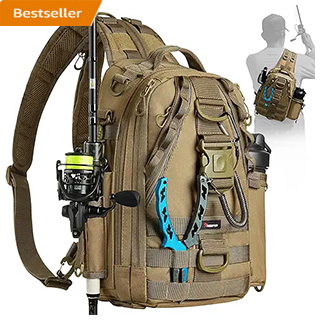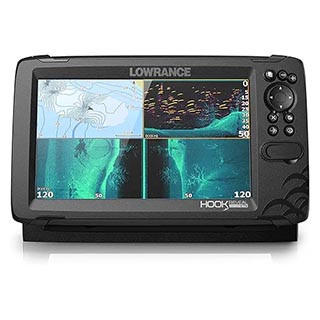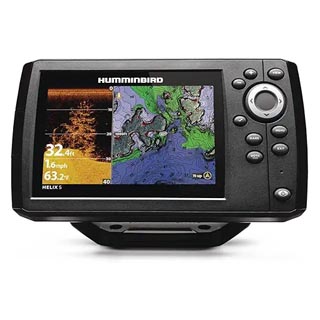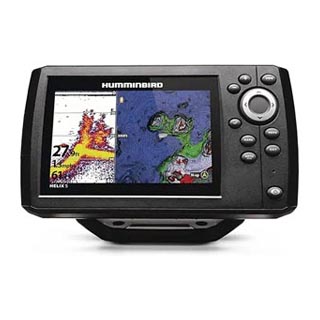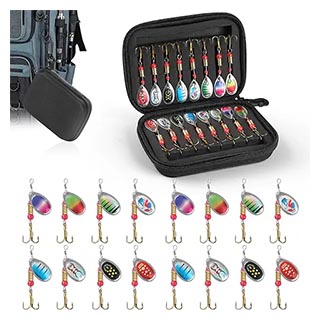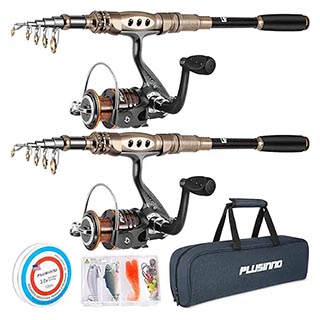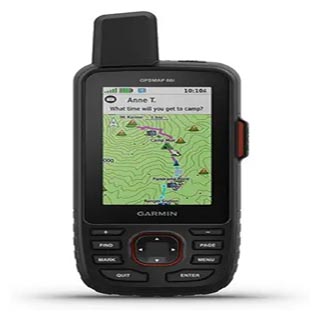Not Just Fishing
Fishing Articles and Information

The Drama of Fly Fishing
By Verlyn Ross
The Drama of Fly Fishing
A fly fishing rod is the most important piece of fly fishing gear that you can buy.
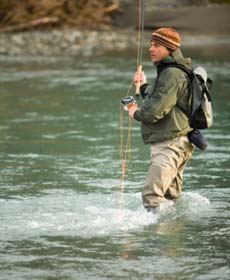
Fly Fishing rods are long, thin, flexible fishing rods, combined with heavy line, designed to cast a fly.
A fly usually consists of a hook tied with fur, feathers,
foam, or other lightweight material.
There are a number of considerations that you should evaluate in selecting a fly rod to
meet your individual needs.
You should carefully research the materials that are used to produce fly rods.
Manufacturers
typically make fly fishing rods out of fiberglass or graphite.
First, let's look at fiberglass.
Experts and beginners alike
can use popular fiberglass fly rods in most fishing conditions.
By contrast, graphite fly rods are generally more expensive than fiberglass.
And, lightweight graphite fly rods typically allow
more accurate casting.
Let's examine the actions of different fly rod types.
Slow-action
rods - you can reel in small lightweight fish with these flexible rods. Slow-action rods have the most bend, making them difficult
for beginners to control, but offer great accuracy for short-range casting.
Medium-action fly rods - beginners usually find
medium-action fly fishing rods easy to handle.
Fast-action fly rods - Stiff fast-action rods bend at the end of the rod and
do not have a lot of give.
Additional Design Details of Fly Fishing Rods:
Fly rods come in a wide variety of line sizes, from size #0 rods for the smallest freshwater trout and panfish up to and including #16 rods for large saltwater gamefish.
Fly rods tend to have a single, large-diameter line guide (called a stripping guide), with a
number of smaller looped guides (aka snake guides) spaced along the rod to help control the movement of the relatively thick fly lines.
Fly fishing rods are long and light and combined with heavy lines that provide the casting weight. Fly fishers use the weight and design
of the line to cast the fly quickly and efficiently, without reeling in the line between casts.
Fly rods are designed to let you sense
a strike, set the hook, and fight and land the fish. Fly fishers speak of a "soul" in a rod, a quality present in all great fly rods.
As indicated earlier, instead of a weighted lure, a fly rod uses the weight of the fly line for casting, and lightweight rods are
capable of casting the very smallest and lightest fly.
Typically, a monofilament segment called a "leader" is tied to the fly line
on one end and the fly on the other.
A rod is usually also classified by the optimal weight of fishing line or in the case of
fly rods, fly line the rod should handle.
To prevent interference with casting movements, most fly rods usually have little or
no butt section (handle) extending below the fishing reel.
However, the spey rod, a fly rod with an elongated rear handle, is often
used for fishing either large rivers for salmon and steelhead or saltwater surf casting, using a two-handed casting technique.
Note, that it is important for fishers to experiment with several different types of fly fishing rods to decide exactly what fits their style and ability.
For your comfort level, fly fishing needs to be your supplier's passion in addition to it being their business. If possible, develop
a personal relationship with him/her. They can be immensely helpful to you.
Fly fishing normally happens in the most beautiful natural surroundings where fly fishers often find themselves; a lonely meandering stream in the forest, a peaceful river deep between the valleys, or a tranquil blue lake somewhere up country. What a wonderful sport!
Verlyn Ross owns and operates a website dedicated specifically to the enjoyment of fishing.
